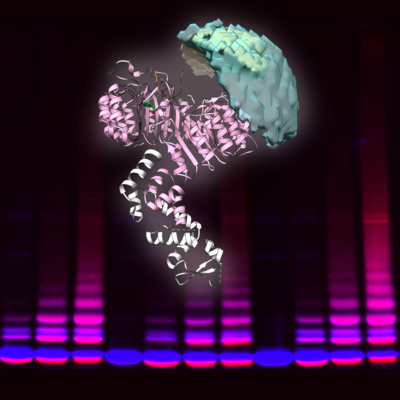The auxin-prompted dance between TIR1 and AUX/IAA proteins demands a hug that helps plants to grow
Plants have the astounding ability to thrive and adapt in environments that more often than not, are hostile. Signaling molecules such as auxins, which are active at very low concentrations, dictate plant behavior including when and how to grow. The ability of auxin to induce complex physiological and morphological changes in cells depends on how intracellular auxin levels are perceived. Auxin is a music of sorts that stimulates a couple of proteins to engage in a singular dance that ultimately results in a kiss of death for one of the dancers. One of the dancing partners is TRANSPORT INHIBITOR RESPONSE 1(TIR1) or any of its homologues AUXIN F-BOX PROTEINS1-5, which win over the other dancing partners, AUXIN/INDOLE 3-ACETIC ACID (AUX/IAA) repressor proteins. The binding event between TIR1·AUX/IAAs induced by auxin promotes AUX/IAAs to be kissed by ubiquitin (ubiquitylation), which ultimately results in their destruction by the proteolytic machinery. Since AUX/IAAs act as transcriptional repressors, their clearing of the “dance floor” enables activation of transcription factors, thereby dictating growth and developmental genes to be turned on.
Since the discovery of TIR1/AFBs and AUX/IAAs to function as an auxin co-receptor system in 2012, researchers have wondered how the precise choreography of TIR1 and AUX/IAAs is displayed. In their latest Niemeyer et al. publication in Nature Communications, scientists in the Signal Integration Group at the Molecular Signal Processing Department together with collaborators at the Martin-Luther University Halle-Wittenberg and the Heinrich-Heine University of Düsseldorf have implemented a multidisciplinary approach to unraveling the mystery behind the auxin-prompted TIR1·AUX/IAA dance.
AUX/IAAs entail a degradation signal or degron, as well as an oligomerization domain and two flexible intrinsically disordered regions (IDRs) or arms in the degron’s vicinity. Auxin had been previously shown to glue together TIR1/AFBs and AUX/IAAs by promoting interaction between TIR1 and the AUX/IAAs degron. Thanks to a joint biochemical, structural and computational effort of the Calderón Villalobos, Sinz and Kastritis Research Groups, snapshots were acquired of TIR1·IAA7 and TIR1·IAA12 dancing couples. This revealed the flexible AUX/IAA arms and their oligomerization domain also participate in the auxin-triggered binding event by openly embracing TIR1. The identified subtle contacts fueled computational modeling leading to the discovery of novel interaction interfaces between the TIR1·AUX/IAA dancing partners, which are relevant for auxin responses in vivo.
Given the various possible auxin co-receptor combinations and their versatility, the findings by Niemeyer et al. open up a venue to understanding the milieu of auxin responses in plants. These studies also nourish collaborative initiatives between the IPB and the MLU, such as the Research Training Group RTG 2467 „Intrinsically Disordered Proteins – Molecular Principles, Cellular Functions, and Diseases“ financed by the DFG.
Guest article by L.I.A. Calderón Villalobos and Elena Moreno Castillo
Reference:
Michael Niemeyer, Elena Moreno Castillo, Christian H. Ihling, Claudio Iacobucci, Verona Wilde, Antje Hellmuth, Wolfgang Hoehenwarter, Sophia L. Samodelov, Matias D. Zurbriggen, Panagiotis L. Kastritis, Andrea Sinz & Luz Irina A. Calderón Villalobos. Flexibility of intrinsically disordered degrons in AUX/IAA proteins reinforces auxin co-receptor assemblies. Nat Commun 11, 2277 (2020). https://doi.org/10.1038/s41467-020-16147-2


